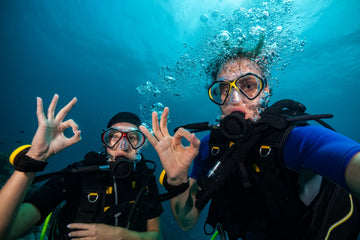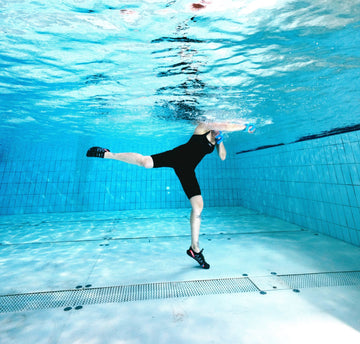What is underwater dancing?
Underwater dancing, also known as freediving or underwater dancing, is an artistic and sporting discipline inspired by three practices: freediving, artistic swimming, and dance. It involves performing graceful and fluid movements while fully submerged, without breathing equipment. Unlike synchronized swimming, it does not yet follow specific rules and can be practiced alone or in groups, at sea, in a pool, or even in cenotes.
The different styles of underwater dance
There are several distinct styles of underwater dancing:
- Artistic swimming style : Gymnastic sequences reminiscent of traditional synchronization with figures such as the pike and the ballet leg.
- The “on land” style : Underwater reproduction of classical dances such as tango or rock 'n' roll, aimed at making people forget the aquatic element.
- Aquatic style : A style that fully incorporates the properties of water, playing with gravity and minimizing unwanted movement. This is the style favored by many dancers.
Environments conducive to underwater dancing
This discipline is practiced both at sea and in a pool, with variations in buoyancy and the necessary equipment. At sea, a wetsuit and weights are often required, while in a pool, the clarity of the water and a more constant temperature facilitate movement.
An art between apnea and dance
Mastering apnea is essential in underwater dancing. It involves not only holding one's breath, but also effectively managing carbon dioxide (CO2) to prolong immersion phases. In addition, the ease in the water inherited from artistic swimming helps maintain balance and fluidity of movement.
Recommended equipment
- Apnea mask and nose clip : To prevent water infiltration and facilitate pressure compensation.
- Wetsuit and weights : Essential at sea to counter natural buoyancy and maintain prolonged immersion.
- Fins and accessories : Optional but useful for moving more freely in the depths.
Art materials
Underwater dance allows for varied aesthetic explorations. The use of flowing clothing, lighting effects, and natural settings such as shipwrecks and marine landscapes adds a cinematic and poetic dimension to the performances.
Why practice underwater dancing?
Beyond the athletic aspect, underwater dance is an invitation to explore the relationship between the body and water, to play with gravity, and to find a new form of artistic expression. It also offers a unique way to reconnect with oneself, combining the introspection of freediving with the freedom of movement in the water.







